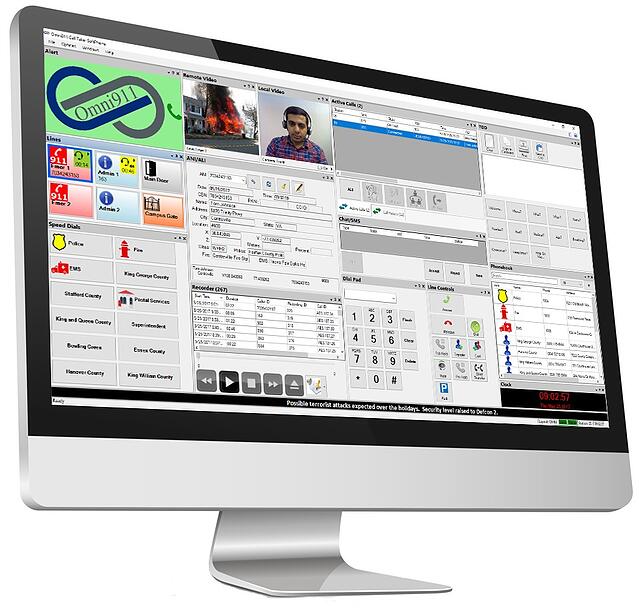May 25 2018 The Individual Impact Of Next Generation 911

According to the Pew Research Center, approximately 95% of Americans use cell/smart phones as their primary communications device. The demographics are:
- 96% of males and 94% females,
- 100% 18 to 29 years of age,
- 99% in the 30 to 49 years of age,
- 97% of 50 to 64 years of age,
- and 82% for those over 65.
Cell phones are ubiquitous. Walk down any urban street, stroll through any airport, trek across any college campus and you see people walking while fixated on their device, seemingly oblivious to the world around them. For PSAPs, upgrading to Next Generation 911 (NG911) is inevitable and it is the right thing to do when considering the trend of mobile devices.
In the old days….
Do you remember back in the days of basic 911? Call takers had to elicit the caller’s name, calling phone number, address, nature of the emergency, and then verify that address via the geofile which delayed the dispatch of the emergency responder by as much as a full minute. Then came Enhanced 911 with the delivery of ANI (Automatic Number Identification) and ALI (Automatic Location Identification) with the call. There was also selective routing, so that the correct PSAP was called and there was no need to hot-transfer the call to another PSAP. So, then all call-takers had to do was verify the callers address, phone number, and nature of emergency before dispatching appropriate emergency response resources.
Next Generation 911 further advances the emergency calling domain by adding text, image, and video capabilities to a 911 call, and it is a hot topic of discussion in the first responder domain today. PSAPs are anticipating the new functionality as a significant enhancement to emergency calling capability. However, no effort, no accomplishment and, no achievement, ever comes without some form of unanticipated side effect, an externality of sorts.
Until the advent of NG911, telecommunicators: in particular, call takers, could only receive voice calls, listen to frantic callers, and deal with the emotional turmoil and mounting stress of keeping their feelings in check. Now with the advent of video and imagery they will now have to deal with the lasting memory of visual impressions.

The new reality…
With all the hoopla about NG911 and everything it brings to the PSAPs, there is very little discussion of the additional emotional impact that this emerging technology will bring. NENA, APCO, and the public safety community should begin the discussions of potential psychological consequences now and prepare for the advent of NG911.
The following statement comes from the Northwest Center for Public Health Practice of the University of Washington:
“NWCPHP researcher Hendrika Meischke, PhD, MPH, says, It is increasingly important to study stress and stress reduction in this workforce to ensure that Next Generation 911 can be implemented without impeding services to the public or increasing the potential for harm to 911 call-takers. Since they already experience a great deal of stress, we are eager to discover what can be done to prevent illness and burnout in 911 call-takers, as Next Generation 911 becomes standard practice.'”
Prepare now before it becomes an issue
The emergency communications discipline should act without delay. Examine the current employee welfare policies now. What, if any additional programs or enhancements to programs will likely be needed to manage potential additional stress? How should supervisors monitor their staff for signs of stress overload given this new capability? Should there be a mandatory “time out” for a telecommunicator who handles a particularly stressful call with video included? Review your Critical Incident Stress Debriefing program; should it be mandatory after a significant event?
A Critical Incident Stress Debriefing is small group “psychological first aid.” The primary emphasis in a Critical Incident Stress Debriefing is to inform and empower a homogeneous group after a threatening or overwhelming traumatic situation. A CISD attempts to enhance resistance to stress reactions, build resiliency or the ability to “bounce back” from a traumatic experience, and facilitate both a recovery from traumatic stress and a return to normal, healthy functions.”
NG911 offers significant promises to the emergency calling world, but it also presents new challenges in its impact on staff who view potentially gruesome and disturbing videos or images. The time to act is now, not after we see a spike in stress consequences that accompany new capabilities.
